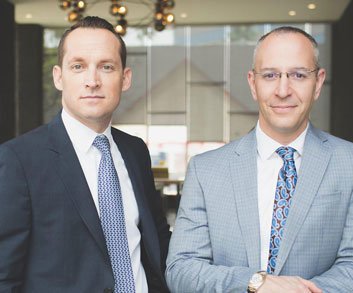Manslaughter in Arizona is defined under ARS § 13-1103, is a Class 2 felony for causing death without the intent of murder. It includes:
Penalties for a first offense (non-dangerous) often range from 4 to 21 years in prison, with a presumptive sentence of around 10.5 years. “Dangerous offenses” carry harsher penalties.
Under Arizona law, A.R.S. § 13-1103, a person can be charged with five types of manslaughter:
Each of the five types of this murder charge is explained in further detail below:
Defined. Reckless requires the prosecution to prove that you recklessly caused the death of another person. This means that the State has to prove that:
Example: Two people are hanging out together. One person is playing around with his loaded .38 handgun. He starts to spin the gun on his finger and the gun accidentally goes off and shoots and kills his friend. The person’s reckless actions caused the death of his friend and he could be convicted of Manslaughter – Reckless.
Vehicular Manslaughter. Reckless charges are vehicular murder charges that involve recklessly causing someone’s death while driving. For example, if a person driving under the influence of alcohol or drugs (DUI) crashes into another car, resulting in the other driver’s death, the DUI driver can be convicted of vehicular manslaughter.
In such cases, consulting a manslaughter lawyer is crucial to understanding the charges and building a strong defense.
Defined. Sudden Quarrel or Heat of Passion requires the prosecutor prove that:
“Adequate provocation” means something that would cause a reasonable person to lose self-control. Words alone are not adequate provocation. There must not have been time for “cooling off” between when you were triggered by the event and the killing. A “cooling off” period is the time it would take a reasonable person to regain self-control in your shoes.
Example: A common example is when a person comes home to find that their significant other is cheating on them. In the heat of passion, the person shoots and kills their cheating significant other. The person intended or knowingly killed their significant other. However, catching their significant other cheating on them reasonably caused them to lose self-control. So, in the heat of passion, the person acted without premeditation.
Defined. Force is when a specific type of Second Degree Murder—the reckless type under A.R.S. § 13-1104(A)(3)—is dropped down to Manslaughter because you were forced to commit Reckless Second Degree Murder by the use or threatened immediate use of unlawful deadly force against you or another person (also called coercion). This means that, for Manslaughter by Force, the prosecution has to prove that:
The unlawful deadly force has to be of the kind that a reasonable person in your situation would not have been able to resist.
The use or threatened immediate use of unlawful deadly force against you or another person does not drop down the other types of Second Degree Murder to Manslaughter because it does not apply to the intentional or knowing killing of another person. Plus, in Arizona, this type of coercion is never a defense to the killing of an innocent person.
Example: A man is in the middle of a crime spree at a shopping mall. He holds a gun to your loved one and threatens to kill your loved one unless you shoot your gun in the crowded mall to cause a distraction. So, you point your gun up and fire your gun (not intending to kill anyone). The bullet from your gun happens to hit and kill a shopper. Your shooting a gun into a crowded mall was reckless and showed an extreme indifference to human life and created a grave risk of death.
You would normally be charged with Second Degree Murder. But you only fired your gun because there was a man pointing a gun at your loved one and threatening to kill them, so the charge should be dropped down to Manslaughter. However, while your loved one’s life being threatened by unlawful deadly force explains your actions, it is not a defense if an innocent person dies as a result. Therefore, you cannot have your case dismissed entirely.
If you are facing such complex legal situations, it’s critical to work with an experienced manslaughter attorney or lawyer to navigate the charges and explore your legal options.
Defined. Aiding Suicide requires the prosecution prove that:
Example: A terminally ill patient wants to commit suicide and asks his doctor in Arizona to prescribe a lethal drug that the patient can administer to himself. The doctor, knowing that the terminally ill patient intends to commit suicide, prescribes the patient a lethal medication. The patient gets the prescription, goes home, takes the drugs, and dies. The doctor can be charged with Manslaughter by Aiding Suicide. In Arizona, even if you are a medical professional, assisted suicide is illegal.
Defined. Unborn Child requires the State prove that:
Exceptions. The law protects certain people from being prosecuted under this law, including:
Manslaughter is a Class 2 Felony in Arizona.
Manslaughter sentencing guidelines state that if you have no prior criminal record, and you did not use a deadly weapon (e.g., a gun) or a dangerous instrument (e.g., a car or a hammer) to commit the crime, then the sentencing for manslaughter could be:
You face longer time in prison if you have a criminal record.
If you are charged with manslaughter as a Class 2 Dangerous Felony, meaning that you either used a deadly weapon (e.g., a gun) or a dangerous instrument (e.g., a car or a hammer), then a prison sentence is mandatory. If this is the case, then the sentencing for manslaughter could be:
And if you have a criminal record, then you again face longer time in prison.

Because this crime can be committed in different ways, the case strategy and what defenses to use depend on the circumstances of an individual case. Common defenses include:
This is a common manslaughter defense used for all types of criminal charges. Your defense attorney will also help you determine whether any experts need to be hired to attack the reliability of the evidence being used against you. Examples of the types of evidence or areas of the investigation that you can fight include:
A very important manslaughter defense is that you did not cause the death of the other person. For example, while in the heat of passion, you shoot someone. The person you shot is driven to the hospital but gets into a car accident on the way there. The person you shot ultimately dies. The prosecution charges you with manslaughter for shooting and killing the person. But your independent defense expert reviews the evidence and finds that the person died from the car accident injuries, not from the gunshot injuries.
Another manslaughter defense is to show that your behavior did not rise to the level of recklessness. Maybe the prosecution overcharged you, and your actions were only criminally negligent, not reckless. So, you should have been charged with the less serious crime of negligent homicide, not Manslaughter. Also, maybe the cause of death was just an accident, not criminal conduct. For example, a gun accidentally went off when someone else tried to grab the gun from you, causing it to go off and kill another person.
When facing serious charges, you need to ensure that you have an experienced manslaughter defense lawyer on your side. You need the best possible strategy and defense for your individual case. At Feldman & Royle, our homicide attorneys have successfully defended clients charged with all types of murder. Our Criminal Defense Attorneys in Phoenix are dedicated to protecting your rights and securing the best possible outcome.. Contact our office as soon as possible for a free consultation.

No tags assigned to this post.